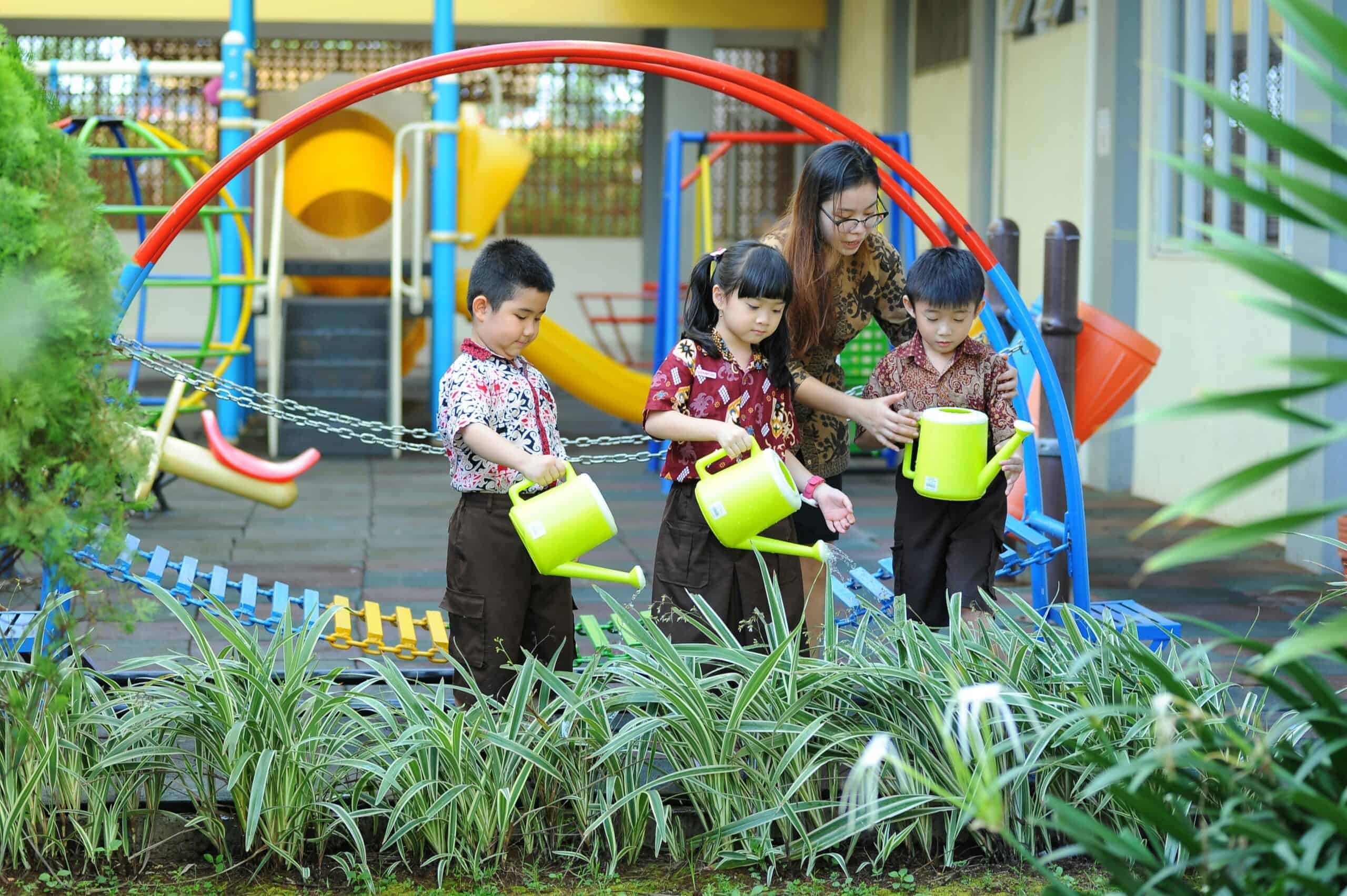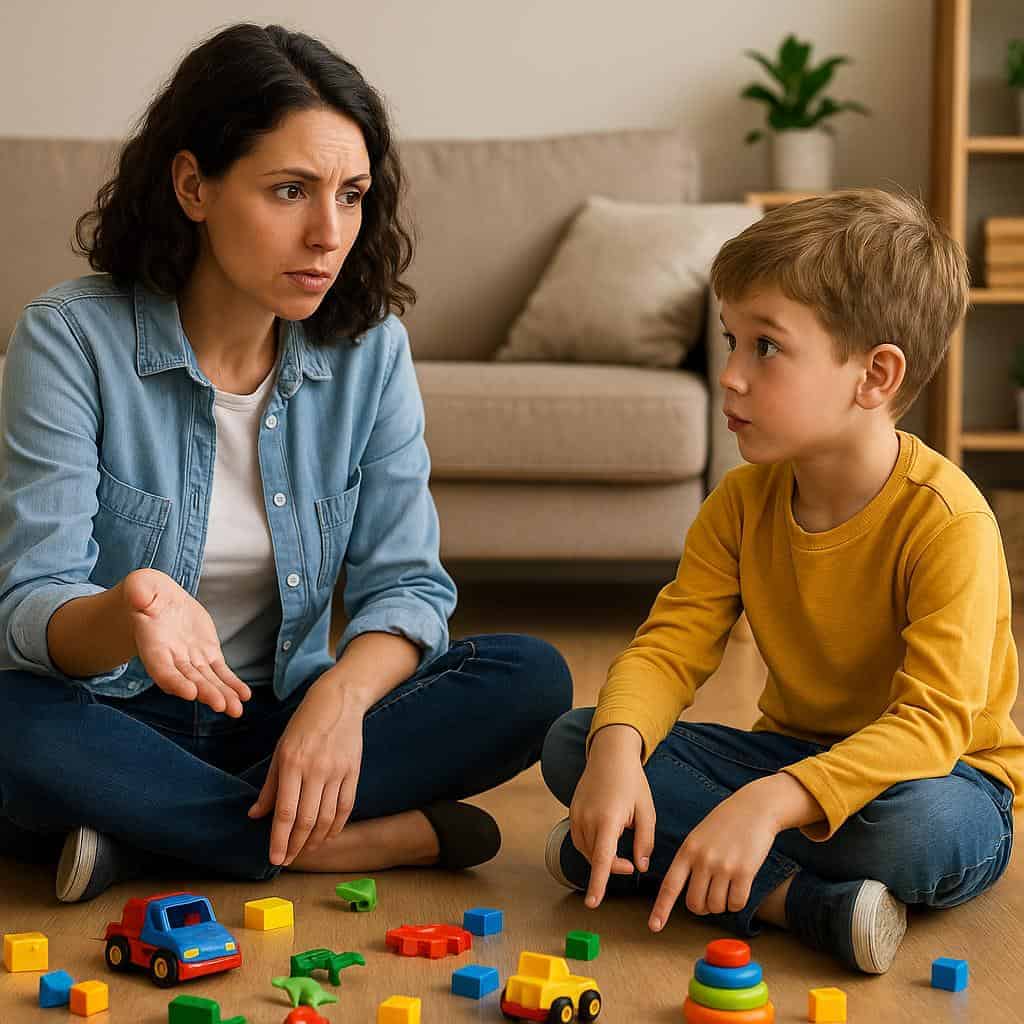Calm Words That Work: 15 Positive Phrases to Use Instead of Yelling at Your Kids
Every parent has been there: patience wearing thin, frustration simmering, and the urge to yell creeping in. Whether it’s sibling squabbles, bedtime battles, or the chaos of a busy day, even the calmest among us can feel pushed to the edge. But while shouting might bring a momentary release, it rarely creates the connection or understanding we truly want with our children. The good news is that there are simple, constructive alternatives that build trust, empathy, and cooperation, even in the most stressful moments. Here’s how to turn that frustration into calm, meaningful communication.
1. “I need a moment to think.”

When frustration bubbles up, pausing is a powerful tool. By calmly saying, “I need a moment to think,” you’re not only defusing the immediate tension—you’re also modeling healthy emotional regulation for your child. Suppose juice spills right after you requested caution. Instead of lashing out, step back and verbalize your need for space. This teaches kids that it’s normal—and wise—to take a break when overwhelmed, just like adults do in professional or social settings. It’s a small phrase with a big impact.
2. “Can we talk about what happened?”

Rather than placing blame or reacting harshly, saying, “Can we talk about what happened?” invites your child into a collaborative conversation. For example, if your child forgets their homework, this approach shifts the focus from the mistake itself to understanding why it occurred and how to prevent it in the future. Just as businesses hold debriefs to learn from errors, not punish, this method fosters a sense of safety and trust. Children feel respected and are more likely to be honest, building essential communication and problem-solving skills.
3. “I feel frustrated, but I love you.”

Communicating, “I feel frustrated, but I love you,” allows you to express your feelings honestly without blaming your child. If, after several reminders to tidy up, you’re tempted to yell, try sharing your emotions calmly instead. This preserves your connection and reassures your child that your love is unconditional. Children need to see that emotions—even difficult ones—are normal and that strong relationships can weather challenges. By naming your feelings, you foster emotional intelligence and security in your child.
4. “Let’s find a solution together.”

Saying, “Let’s find a solution together,” transforms a stressful moment into a chance for collaboration. Instead of dwelling on what went wrong—like siblings fighting over a toy—invite your children to help brainstorm a fair outcome. This approach mirrors effective conflict-resolution practices in classrooms and workplaces, where teamwork is key. Engaging your child in the process helps them build negotiation and compromise skills, while you maintain a calm, supportive tone. Everyone feels heard, and the focus shifts from conflict to cooperation.
5. “It’s okay to make mistakes.”

When you reassure your child, “It’s okay to make mistakes,” you create an environment where learning and growth are possible. Instead of reacting with anger to a spilled glass of milk, calmly affirming this message reduces your child’s fear and shame. This approach echoes the growth mindset philosophy promoted in schools and successful organizations. Children learn that everyone makes mistakes, and what matters is how we respond and move forward—encouraging resilience and open, honest communication.
6. “I can see you’re upset. How can I help?”

Acknowledging your child’s emotions with, “I can see you’re upset. How can I help?” demonstrates empathy before you address their behavior. If your child is crying after losing a game or feeling frustrated after being told ‘no’, recognizing their feelings shows that you care and builds trust. Offering support rather than criticism encourages children to open up and seek guidance, making it easier to navigate difficult moments together. This approach mirrors emotional coaching techniques, helping children handle big feelings in healthy, constructive ways.
7. “Let’s take a deep breath together.”

Breathing exercises offer a simple yet powerful way to reset emotions in tense moments. If homework struggles lead to rising tempers, suggesting, “Let’s take a deep breath together,” helps both parent and child pause and calm down. This shared act creates a moment of connection and gives everyone a chance to regain composure. Such techniques are widely used in classrooms and therapy sessions to manage big feelings and refocus attention, as highlighted by the American Psychological Association.
8. “What do you need right now?”

Asking, “What do you need right now?” promotes self-awareness and problem-solving in children. Instead of insisting or guessing what might help—such as when your child refuses to put on shoes—this question invites them to reflect on their own needs and articulate solutions. It’s a respectful, collaborative approach, much like patient-centered care in healthcare, where the individual’s voice matters. Encouraging autonomy in this way helps children develop independence and strengthens your partnership in overcoming daily challenges.
9. “Let’s try that again together.”

Inviting your child to “try that again together” shifts the focus from punishment to learning. If your child speaks disrespectfully, suggest practicing a kinder response side by side. This approach, similar to the role-playing techniques often used in teaching and therapy, allows children to rehearse positive behaviors in a safe, supportive environment. It provides them with a fresh opportunity to succeed, builds confidence, and helps cement respectful communication as a shared family value.
10. “I know this is hard for you.”

Saying, “I know this is hard for you,” validates your child’s feelings and shows genuine empathy. When a child resists chores or gets frustrated with homework, acknowledging the difficulty helps ease defensiveness and opens the door to cooperation. This approach is echoed by coaches and mentors who motivate others by recognizing their challenges, then encouraging perseverance. Children who feel understood are more likely to trust you, work through obstacles, and develop long-term resilience.
11. “Thank you for telling me how you feel.”

Expressing gratitude—“Thank you for telling me how you feel”—encourages your child to be open and honest. When your child confides in you about breaking a rule or shares tough emotions, responding with appreciation rather than anger builds trust. This mirrors the feedback culture in effective organizations, where openness is prioritized over perfection. By modeling respectful dialogue, you create a safe environment for your child to communicate, strengthening your relationship and fostering emotional intelligence.
12. “I’m listening.”

Sometimes, the most effective response is simply, “I’m listening.” When your child is upset or acting out, pausing to truly hear them—without interrupting or formulating your reply—can quickly reduce tension. This mirrors active listening strategies used in conflict resolution, where feeling heard often leads to more peaceful outcomes. By focusing on their words and emotions, you show respect and care, making it easier for your child to calm down and cooperate.
13. “What’s your idea for fixing this?”

Asking, “What’s your idea for fixing this?” gives your child an active role in resolving challenges. If toys are left scattered, invite your child to brainstorm ways to tidy up together. This approach mirror collaborative leadership styles, where team members are encouraged to contribute solutions and take responsibility. Empowering children in this way boosts their confidence, nurtures problem-solving abilities, and helps them understand the value of accountability.
14. “I’m proud of you for trying.”

Recognizing your child’s effort with, “I’m proud of you for trying,” helps build their self-esteem and intrinsic motivation. Even when the outcome isn’t perfect, acknowledging the attempt encourages your child to persevere and keep learning. This mindset is widely supported in education and coaching, where celebrating growth and effort is just as important as recognizing success. Children who feel valued for their persistence are more likely to tackle challenges with confidence and resilience.
15. “Let’s start over and try again.”

Granting a fresh start with, “Let’s start over and try again,” can quickly diffuse frustration and model resilience for your child. When a morning routine unravels, suggesting a do-over shifts the focus away from blame and toward positive action. This approach mirrors restorative practices in schools and organizations, where the emphasis is on finding solutions and repairing relationships. It teaches children that mistakes aren’t final and new beginnings are always possible.
Conclusion

Choosing constructive words instead of yelling transforms tense moments into opportunities for growth and connection. These alternatives not only nurture positive parent-child relationships but also foster emotional intelligence and lasting trust. By practicing calm, empathetic communication, you set the stage for a more peaceful home where children feel safe, heard, and valued. Start incorporating these phrases today and notice the difference in your family’s dynamic.






